#St. Paul’s Chapel
Explore tagged Tumblr posts
Text












The St. Paul’s Chapel in New York City was consecrated on October 30, 1766.
#St. Paul’s Chapel#consecrated#30 October 1766#Lower Manhattan#travel#summer 2013#2009#New York City#architecture#Thomas McBean#USA#Peter Harrison#Georgian#interior#exterior#original photography#vacation#cityscape#organ#209 Broadway#The Little Chapel That Stood#bell#One World Trade Center#tourist attraction#landmark#cemetery#US history#anniversary
2 notes
·
View notes
Text

St. Paul’s Chapel, Broadway and Fulton Street, part of the Parish of Trinity Church Wall Street. Built in 1766 / One World Trade Center
0 notes
Text
Why do women veil in church?
As a kid, I would observe it among the older women attending Mass. I didn't like it. I thought it was some weird, dated thing and so I had no interest. After all, it would mess up my hair!
It wasn't until I started the Latin Mass more regularly that I grew more open to it, but I still wasn't into the veiling thing. What was the point of it anyway?
Finally, a friend went ahead and bought one for me, as a way to gently nudge me to try it. A delicate, white infinity veil (white at the time 😅). I'd never worn one before. How was I supposed to wear it? But for my friend's sake, I did give it a try. And (in my vanity, ironically) once I realized how pretty I felt in it, I thought, "Hmm, maybe this veiling thing isn't so bad." And so, from then on, I started veiling. But I still didn't get why.
Yet the more I went to this Latin Mass I'd discovered, the more I bonded with the community at my church, the more I saw the beautiful piety of the other women veiling… There was a gradual change in me. I intuitively began to understand it's not about how we look, it's not about us at all. We come to church for God.
I tried to ask around, I even watched videos, looking for explanation for veiling that made sense to me. I knew that it was right, yet if you asked me, I couldn't explain why.
But now, after a long time, I get it. Here's a way to explain it that helped me the most:
Old fashioned etiquette decreed that men take their hats off as a sign of respect, whether it be when entering someone's house, greeting a boss, in the presence of a lady, or entering a Christian church. Why? Because hats identified social standing throughout history. It was a sign of deference.
This is especially important when entering a Catholic church, God's house, where He is present on the altar. Men remove their hats to show that they submit their God-given authority to Him Who holds the highest authority.
So then why do women do the opposite and cover their hair??
Ladies, we know that how our hair looks is very important! I can't tell you how much time I've spent getting my hair ready for work, church, dances, whatever the occasion! "Hair is a woman's glory." Women are one of God's most beautiful creations. It's written on our hearts by Him to want to be beautiful. But at church, it's all about God, remember? And so, a woman covering her hair is relatively the same thing as a man removing his hat. It's a sign of deference to God when in His house, covering our hair so as not to be a distraction when we're all gathered to lift our eyes to God and glorify Him alone.
One last note: This isn't actually just some out-dated tradition. It's biblical. St. Paul writes about women veiling in prayer. (1 Corinthians 11:7-9)
#catholic aesthetic#christianity#catholic academia#veiling#chapel veil#st paul#corinthians#church#latin mass#bible#biblical#mary's mayflower#mayflower of mary#prayer#christian veiling#head covering
148 notes
·
View notes
Text

just the wind
.
the teller of secrets
has the softest voice
whispers for only
only one person at a time
but secrets so old
and personal that they’re
useless as greetings
for the dead
#my pet camera#photography#theme capsule poetry#poets of tumblr#poetry#poets on tumblr#my poetry#pics and poetry#st Paul’s chapel#new york city
0 notes
Text

Chapelle Sainte Claire (C15th) Saint Paul de Vence (2019)
© optikestrav
1 note
·
View note
Text
Filming locations from The Crown you can actually visit
As ‘Set-Jetting’ Looks Set to Save Britain’s Finest Homes Fans of The Crown can take a road trip around some of the most recognisable and unusual UK filming locations. Quotezone.co.uk have researched eight hotspots from around the country which fans can visit for themselves, including sites from the upcoming season six. Image Credit – Pexels Wilton House in Sailsbury was used as a stand-in…

View On WordPress
#Balmoral Castle#Buckingham Palace#Film Locations#Movie Locations#St Andrews#St George&039;s Chapel#St Paul&039;s Cathedral#The Crown#The Queen#Windsor Castle#York Minster
1 note
·
View note
Text

St. Paul bay & church
#chapel#church#st. paul#travel photo blog#travel photography#vacation#photoblog#island#greece#hellas#greek island#tummy#lindo#lindos#rodos#rhodes
0 notes
Text
Went to say hello to Harry Goodsir today at the Chapel of St Peter and St Paul in Greenwich.





#the terror#the terror amc#james fitzjames#franklin expedition#Harry Goodsir#my photos#coming here is the closest I’ll get
65 notes
·
View notes
Text
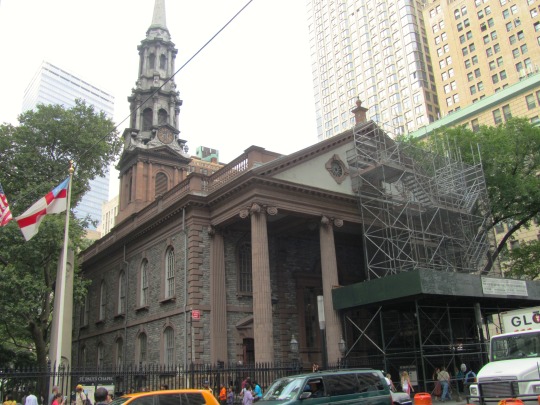
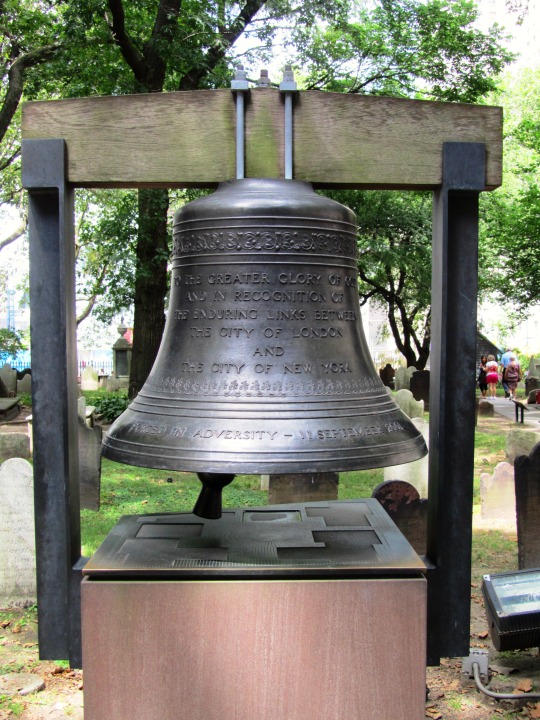


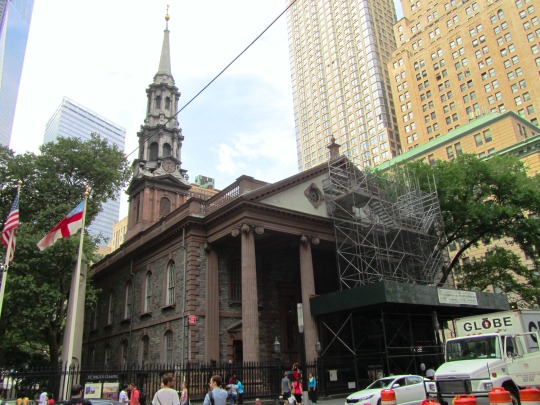



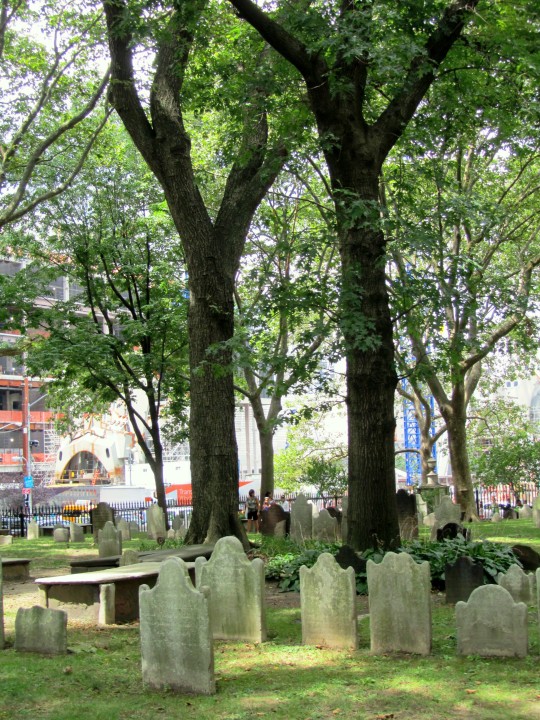
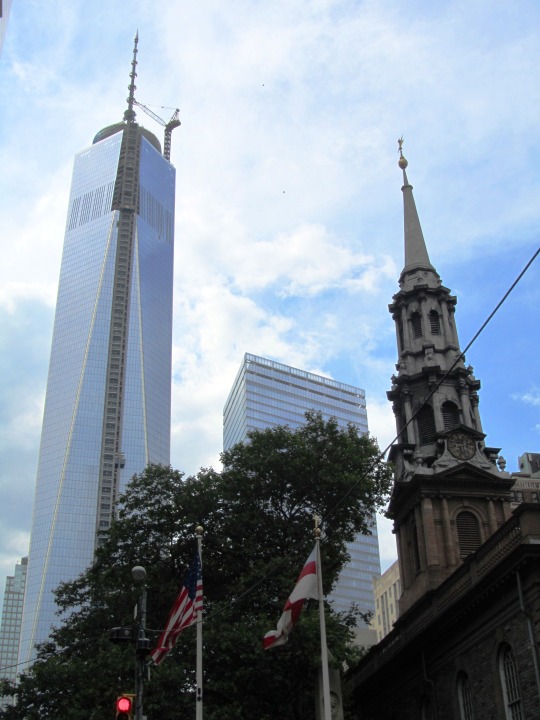


The St. Paul’s Chapel in New York City was consecrated on October 30, 1766.
#St. Paul’s Chapel#consecrated#30 October 1766#Lower Manhattan#travel#summer 2013#2009#New York City#architecture#Thomas McBean#USA#Peter Harrison#Georgian#interior#exterior#original photography#vacation#cityscape#organ#209 Broadway#The Little Chapel That Stood#bell#One World Trade Center#tourist attraction#landmark#cemetery#US history#anniversary
0 notes
Text
National Rainbow Week of Action in Canada

In this post I have compiled all the information I could find regarding upcoming events for the Rainbow Week of Action. There are two online events, and dozens on in-person events across the country.
"Within the Rainbow Week of Action, we are pushing governments and elected officials at every level to take action for Rainbow Equality and address rising anti-2SLGBTQIA+ hate. As such, we have identified calls to action for every level of government. These calls to action can be reviewed here."
Event list below:
Events are listed in date order, provinces in general west-to-east order. I have included as much detail as possible, please reference the links at the bottom of the post. At this time, there are no events in N.W.T. and Nova Scotia. Last updated: May 14th, 9:53pm PDT. Please note that I am not officially affiliated with / an organizer of these events, I have simply compiled all the dates to share on tumblr. Original post content.
B.C. EVENTS:
15th: Fernie; Fernie Seniors Drop-In Centre, 572 3rd Avenue, 6:00PM. (Letter writing and Potluck)
17th: Vancouver; šxʷƛ̓ənəq Xwtl'e7énḵ Square - Vancouver Art Gallery North Plaza, 750 Hornby St, 5:30PM. (Rally)
19th, Sunday: Abbotsford; Jubilee Park, 5:00PM. (Rally)
ALBERTA EVENTS:
15th: Lethbridge; McKillop United Church, 2329 15th Ave S, 12:00-1:00PM (letter writing)
17th, Friday: Calgary; Central Memorial Park, 1221 2 St SW, 5:30PM. (Rally)
17th: Edmonton; Wilbert McIntyre Park, 8331 104 St NW, 6:00PM. (Rally)
SASKATCHEWAN EVENTS:
17th: Saskatoon; Vimy Memorial Park, 500 Spadina Crescent E, 5:30PM. (Rally)
17th: Regina; Legislative Grounds, 2405 Legislative Dr, 6:30PM. (Rally)
May 18th: Saskatoon; Grovenor Park United Church, 407 Cumberland Ave S, 6:00PM. (Art event)
MANITOBA EVENTS:
16th: Carman; Paul's Place, 20 1 Ave SW, 7:00-9:00PM. (Letter writing)
19th: Winnipeg; Manitoba Legislature, 450 Broadway, 12:00PM. (Rally)
ONTARIO EVENTS:
15th: Barrie; UPlift Black, 12 Dunlop St E, 6:00-7:30PM. (Letter writing)
15th: Chatham; CK Gay Pride Association, 48 Centre St, 5:00-6:30PM. (Letter writing)
15th: Peterborough; Trinity Community Centre, 360 Reid St, 12:00-3:00PM. (Letter writing)
16th: Midland; Midland Public Library, 4:30-7:30PM. (Letter writing and pizza)
16th: Ottawa; Impact Hub, 123 Slater Street, 2:00PM. (Letter writing)
16th: Toronto; Barbara Hall Park, 519 Church St, 11:30AM. (Rally)
17th, Friday: Barrie; City Hall, 70 Collier St, 6:00PM. (Rally)
17th: Cornwall; 167 Pitt St, 5:30PM. (Rally)
17th: Essex; St. Paul's Anglican Church, 92 St. Paul St, 6:00-8:00PM. (Letter writing and pizza)
17th: Hamilton; City Hall, 71 Main St W, 6:00PM. (Rally)
17th: Kitchener; City Hall, 200 King St W, 6:00PM. (Rally)
17th: London; City Hall, 300 Dufferin Ave, 6:00PM. (Rally)
17th: Sarnia; City Hall, 255 Christina St N, 1:00PM. (Rally)
17th: Sault Ste Marie; City Hall, 99 Foster Dr, 11:30AM. (Rally)
17th: Ottawa; Confederation Park, Elgin St, 5:30PM. (Rally)
22nd: Renfrew; 161 Raglan St. South, 7:00PM. (Letter writing, fashion and makeup event, and pizza)
QUEBEC EVENTS:
May 15th: Lachute; CDC Lachute, 57, rue Harriet, 12:30PM. (Letter writing event)
NEW BRUNSWICK EVENTS:
17th: Woodstock; Citizen's Square, Chapel St, Next to the L.P. Fisher Public Library, 12:00-1:00PM. (rally)
17th: Saint John; City Hall, 15 Market Square, 12:30PM. (Rally, flag raising)
18th, Saturday: Fredericton; Legislative Grounds, 706 Queen Street, 1:00PM. (Rally)
NOVA SCOTIA EVENTS:
May 17th: Middleton; NSCC AVC RM 121, 6:30-8:30PM (letter writing and pizza)
P.E.I. EVENTS:
May 15th: Charlottetown; Peers Alliance Office, 250B Queen Street, 6:00-8:00PM. (Adult drop-in)
May 16th: Charlottetown, Peers Alliance Office, 250B Queen Street, 6:00-7:00PM.
May 17th: Charlottetown; PEI Legislative Assembly, 165 Richmond St, 12:00PM. (Rally)
YUKON EVENTS:
16th: Whitehorse; The Cache, 4230 4 Ave, 2:00-7:00PM. (Letter writing)
NUNAVUT EVENTS:
May 16th, Thursday: Iqaluit; Four Corners, 922 Niaqunngusiariaq St, 5:00PM. (Letter writing)
Reference links:
About the Rainbow Week of Action.
Website letter writing events list (does not include all events)
General events website list (does not include all events)
Instagram general events image list
Instagram letter writing / pizza party image list
#rainbow week of action#lgbt#cdnpoli#lgbtq#canada#alberta#british columbia#saskatchewan#manitoba#new brunswick#newfoundland and labrador#yukon#nunavut#prince edward island#ontario#quebec#nova scotia
116 notes
·
View notes
Text



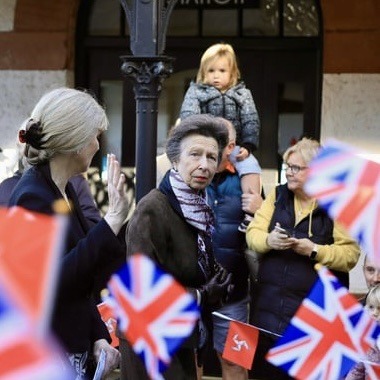
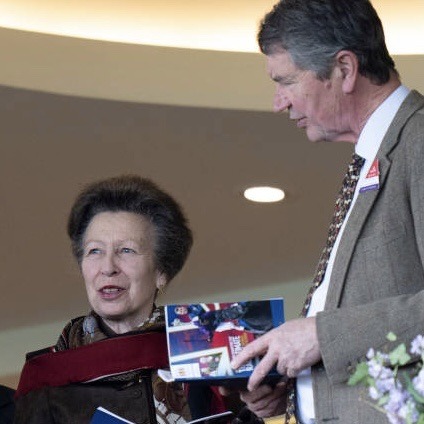




The Princess Royal’s Official Engagements in October 2024
01/10 As Court Member of the Fishmongers’ Company, visited a Food Technology Class at Bingley Grammar School. 🐟🏫
As President of the UK Fashion and Textile Association, visited SIL Group’s Fibre Processing Mill at Ladywell Mills in Bradford. 🧵🧣
Visited Viking Arms Limited in Harrogate. ⚔️🏹🗡️
02/10 Visited Blackburn Meadows Bio-Mass Power Plant in Tinsley, Sheffield. 🍃🔋
Visited Sheffield Forgemasters. 🔥⚒️
Visited Loadhog at the Hog Works. 🚛🚚
Opened the University of Sheffield’s Gene Therapy Innovation and Manufacturing Centre. 🧬
03/10 As President of Carers Trust, attended the Short Breaks Wales Conference at Sophia Gardens Cricket Ground in Cardiff. 🦽🏴
As Colonel of The Blues and Royals (Royal Horse Guards and 1st Dragoons), attended the Annual Dinner at the Mandarin Oriental Hyde Park Hotel in Knightsbridge, London. 💂🍽️
04/10 As Vice Patron of the British Horse Society attended the Changing Lives Through Horses Forum at Saddlers' Hall in London. 🐎
08/10 As President of the Royal Yachting Association, opened Warsash Sailing Club’s renovated Clubhouse. ⛵️🍾
As Patron of Catch22, visited the Orion Centre in Havant, Hampshire. 🫂
Sir Tim represented Princess Anne at the Memorial Service for Mrs Julia Rausing (Philanthropist) which was held in St James’s Church in London. ⛪️
09/10 Attended the Annual National Service for Seafarers in St. Paul's Cathedral. ⛪️⚓️
10/10 As Patron of the Royal College of Emergency Medicine, attended the Annual Scientific Conference at the Glasshouse International Centre for Music in Gateshead. 💊
As Patron of the Butler Trust, visited North Tyneside Youth Justice System in North Shields. 🔗
Opened a renovated manufacturing facility in North Shields. 🏢
11/10 As Admiral of the Sea Cadet Corps, Marine Society and Sea Cadets, opened Midlands Boat Station in Birmingham. 🫡⛵️
As Chancellor of Harper Adams University, opened the Digital Learning Hub at the Quad in Telford. 🖥️💻🎮
As Patron of YSS Limited, visited the Criminal Justice Service at the Shropshire Golf Centre in Telford. 👩⚖️
14/10 As Guardian of Give Them A Sporting Chance and the Chaffinch Trust, held Management Board and Team Meetings at Gatcombe Park. 💼
15/10 With Sir Tim as Royal Patron of the Motor Neurone Disease Association, attended the “Countdown to Cure” Reception at the Royal College of Nursing in London. 💊
With Sir Tim As Patron of the Remembrance Trust, attended a Dinner at the Beefsteak Club in London. 🌹
16/10 As Royal Patron of the Security Institute, attended the Annual Conference at the Royal Society of Medicine. 🚨🔒
As Master of the Corporation of Trinity House, attended a Civic Luncheon at Trinity House. 🍽️
As Royal Patron of WISE, attended the Annual Conference at IET London: Savoy Place. 🧩
17/10 As Patron of the Cathedral Church of Saint German Peel Development Appeal attended a Thanksgiving Service in St German’s Cathedral, Peel, Isle of Man. 🇮🇲⛪️
Visited the Manx National Heritage “All at Sea” Exhibition at the House of Manannan in Peel, Isle of Man. 🇮🇲 🌊
As Grand Master of the Royal Victorian Order, attended Evensong and a Reception at The King’s Chapel of the Savoy in London. ⛪️🍾
As President of the Royal Society for the encouragement of Arts, Manufactures and Commerce, attended a Reception to mark the 250th Anniversary of RSA House. 🎂
Unofficial Sir Tim, as Chair of the Board of Trustees of the Science Museum Group, attended the launch of the Manchester Science Festival at the Science and Industry Museum in Manchester. 🧪🧬🔭
18/10 On behalf of The King, held an Investiture at Buckingham Palace. 🎖️
Attended a performance by the Spanish Riding School of Vienna at OVO Arena in Wembley. 🇦🇹🇪🇸🐎
19/10 With Sir Tim Attended British Champions Day at Ascot Racecourse. 🏆🐎
22/10 As Master of the Corporation of Trinity House, chaired the Quarterly Meeting of the Court and attended a Luncheon at Trinity House. 💼
As Patron of UK Coaching, held a Reception at Buckingham Palace to celebrate Olympic and Paralympic Coaching. 🇬🇧🏅
23/10 Attended a Bicentenary Commemorative Service to recognise the Scottish Fire and Rescue Service in St Giles’ Cathedral, Edinburgh. 🚒🧯👨🚒
As Royal Patron of Leuchie Forever Fund, held a Benefactors’ Dinner at the Palace of Holyroodhouse. 🍽️
24/10 Re-opened the Rowan Glen Factory at Palnure, near Newton Stewart. 🍶
As Patron of the Royal College of Occupational Therapists, opened the new wing at West Cumberland Hospital in Whitehaven. 🏥
With Sir Tim As Patron of the Royal Navy and Royal Marines Charity, attended the Trafalgar Night Dinner at the Old Royal Naval College in Greenwich. ⚓️🫡🍽️
25/10 Opened the British Standards Institution International Electrotechnical Commission Annual Meeting at the Edinburgh International Conference Centre. 🏴🔋
28/10 Attended the Prison Advice and Care Trust’s 125th Anniversary National Volunteer Awards at St John’s Church in London. 🏆
29/10 On behalf of The King, held morning and afternoon investitures at Windsor Castle.🎖️
31/10 Visited the Robotic Surgery Unit at Musgrove Park Hospital in Taunton. 🤖🏥
Attended a Reception for the Pride of Somerset Youth Awards winners at Bridgwater and Taunton College. 🏆
Was installed as Chancellor of Health Sciences University before launching the University in Bournemouth. 🎓
As Patron of Save the Children UK, attended the Autumn in the City Dinner at the Savoy in London. 🍽️
Total official engagements for Anne in September: 58
2024 total so far: 371
Total official engagements accompanied/represented by Tim in September: 5
2024 total so far: 91
FYl - due to certain royal family members being off ill/in recovery I won't be posting everyone's engagement counts out of respect, I am continuing to count them and release the totals at the end of the year.
#it’s that time of the month again kids#princess anne#princess royal#tim laurence#timothy laurence#court circular#october 2024#aimees unofficial engagement count 2024
42 notes
·
View notes
Text
Ergo Proxy Opening: In search for the artwork's source
Ergo Proxy's Opening is a fascinating piece of artwork characterized by it's kaleidoscopic mix of scenery, images from the series and subtle references to pieces of art and literature. The whole design reminds me a bit of the style of Kyle Cooper in intro sequences like Se7en . Some are very clear while others are quite cryptic and frankly unreadable. This post will summarize a few of those references and their sources:
Holy Images
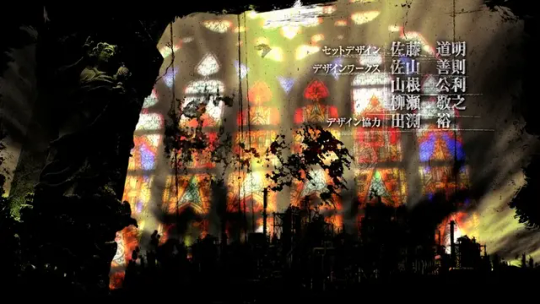
First we have the apparition of some glass panels and a statue in a column, and the image of some industrial complex. The statue have a chalice and appears to be a young man, and an eagle at his feet. Those are the attributes of Saint John the Younger. With that in mind, the search was easier... and after almost 14 hours of reading and searching, I found two of the three artworks.
Both the statue and the stained glass comes from the The Cathédrale Saints-Michel-et-Gudule at Brussels.
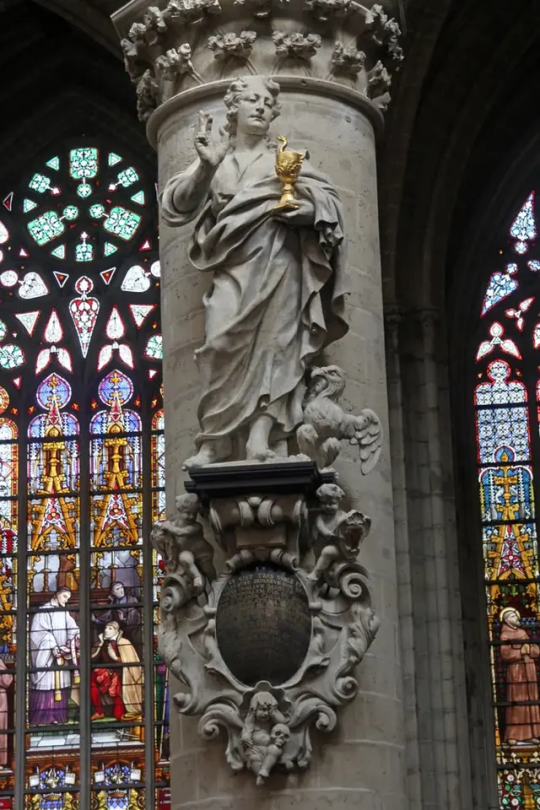
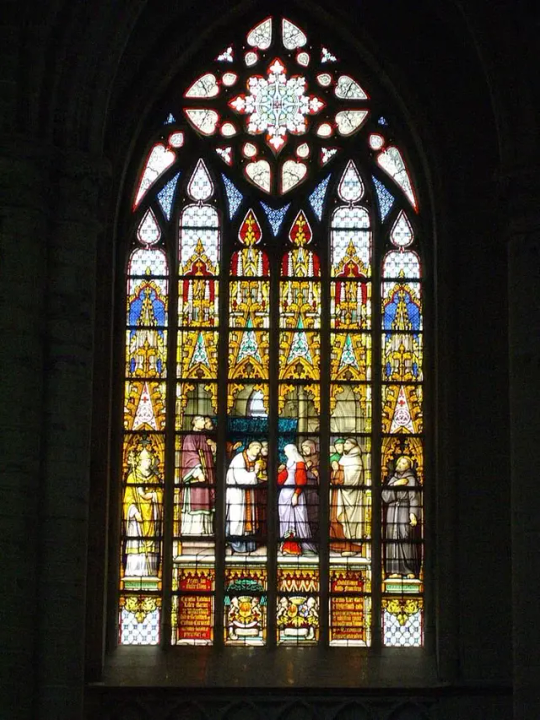
Stained Glass, probably made by Jean-Baptiste Capronnier (c. 1870):

Another decorated window appears, this time with a more modern artwork. The decorated window was designed by Alfons Mucha, c. 1930, for the reconstruction work for St. Vitas Cathedral in Prague.
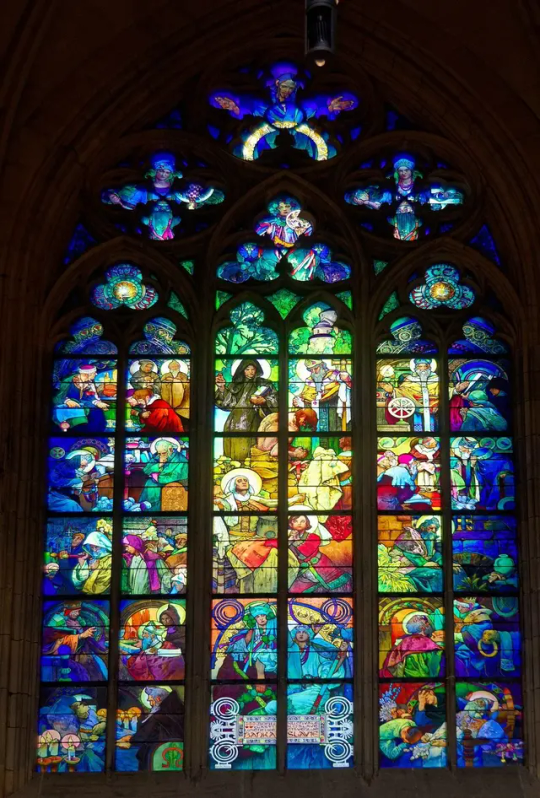
The Power of Seven and the Lapis Philosoficus

The occasional image of complex astrological or alchemical heptagrams flashes many times during the opening, being this one the most clear snap I could get. The text in the center of it reads "Ma Te Ri A Pri Ma *" that confirms the alchemical nature of the illustration.
After many attempts to find the source of the illustration i had to dive into my older alchemy notes. Suddenly I remember the works of a notorious alchemist obsessed with number seven, none other than Sir Isaac Newton. And Eureka!
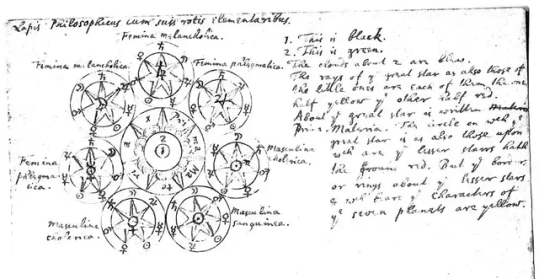
the image comes from a set of notes on the processes behind the achievement of the philosopher's stone, titled "Lapis Philosophicus cum suis rotis elementaribus" and dated to c. 1690
Landnámabók
Some of the decorations that appears on the opening comes directly from the icelandic text of settlers, a medieval Icelandic written work which describes in considerable detail the settlement (landnám) of Iceland by the Norse in the 9th and 10th centuries CE.


La Glorification de l'Art

This one was relatively easy to find. It is a quite common allegorical representation.
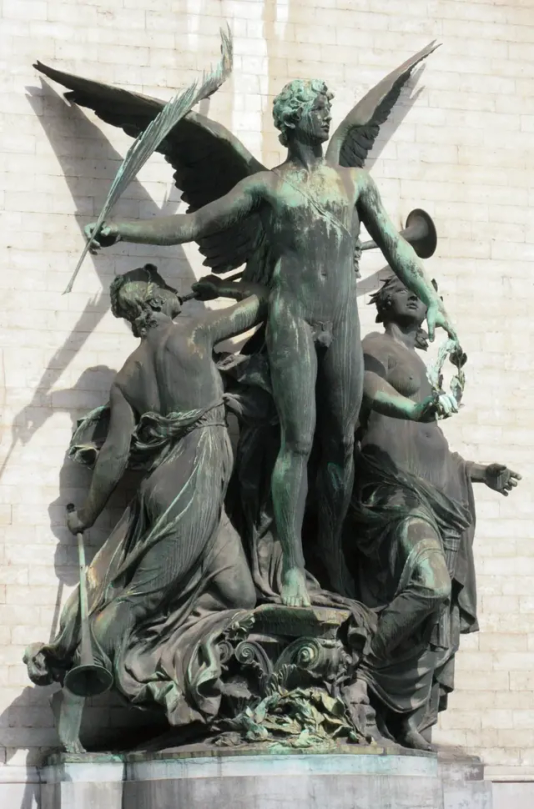
The building housing the Royal Museum of Ancient Art in Brussels is a masterpiece designed by Alphonse Balat, the Court's favorite architect, the sculpture flanking the main entrance is the work of Paul de Vigne, and was made around 1885. La Glorification de l'Art depicts Art as a winged youth, accompanied by Glory and Fame. It also appears on the opening. Art, represented by a winged man, receives from the hand of Glory a palm and a crown; while the Fame, with trumpet and bumper, publishes her exploits.
Rhyme 247

notice the words on the right side of the screenshot: "e vero", "Non Veder" "Gran Ventura"
Michelangelo Buonarroti was an exceptionally good artist, and a passionate poet too, even when he preferred to keep most of his literary production quite obscure. One of his works for the Sagrestía Nuova at the Medici Chapel in Florence was a representation of the Night, placed over the tomb of Giuliano di Lorenzo de' Medici, Duke of Nemours. Night was singularly praised by his contemporaries, especially Giovanni Strozzi, who dedicated an epigram on 1544:
La Notte che tu vedi in sì dolci attidormire, fu da un Angelo scolpitain questo sasso e, perché dorme, ha vita:destala, se nol credi, e parleratti.
Michelangelo responded in another epigram, today known as Rhyme 247:
Caro m'è 'l sonno, e più l'esser di sasso,mentre che 'l danno e la vergogna dura;non veder, non sentir m'è gran ventura; però non mi destar, deh, parla basso
This Rhyme appears on Ergo Proxy in another occasion:

The poem as appears on the beginning of the first episode
NIGHT DAWN DAY DUSK
Donov Mayer's Collective Entourage are embodied by the four sculptures from the allegorical monument (Sagrestía Nuova) of Michellangelo. A pair of the statues were located over the sarcophagus of Giuliano de' Medici, (Day and the Night) and Lorenzo de' Medici (Dusk (or Twilight) and the Dawn) respectively. On the series, each have the name of one prominent occidental philosopher:
Lacan: as Night, Voiced by: Atsuko Tanaka (Japanese), Barbara Goodson (English)
Derrida: as Dawn, Voiced by: Yōko Sōmi (Japanese), Melodee Spevack (English)
Husserl: as Day, Voiced by: Hidekatsu Shibata (Japanese), Michael McConnohie(English)
Berkeley: as Dusk, Voiced by: Yuu Shimaka (Japanese), Doug Stone(English)

[Unknown]
Some artworks or pieces of literature used are still unknown (for me)

The industrial landscape

The cursive text

And this arabic/persian texts
Thank you so much for reading so far
20 notes
·
View notes
Text
"Sarolt of Transylvania is depicted in the written chronicles as a fierce, independent woman. The daughter of Gyula, Prince of Transylvania, she married Géza (r. 975–997), Prince of the Hungarians and the pair had one son, St. Stephen I of Hungary (r. 997–1038) and four daughters. Originally baptized in the Byzantine faith, Sarolt is lambasted by two Catholic chronicles; Thietmar of Merseburg states that she rode her horse like a soldier, was a dypsomaniac, and that she even murdered a man in a fit of rage. Bruno of Querfurt writes that she “had been holding the whole country in her power with a hand of a man, and who had been governing everything owned by her husband.” This depiction of Sarolt is in direct contrast with the fictitious Adelaide of Poland, a princess created by Polish chroniclers as a pious foil who marries Géza and converts him to Christianity. In 997, Prince Géza died and was interred at the chapel of SS Peter and Paul in Székesfehérvár. While Stephen succeeded his father as prince, a rival named Koppány, the duke of Somogy, claimed his right to the throne as a senior member and took steps to besiege Sarolt’s residence in Veszprém with the intention to marry her; Koppány was defeated by Stephen soon after. Sarolt is mentioned again in 1003 when Stephen defeated her brother, Gyula of Transylvania. After Gyula surrendered to Stephen, the prince was given a residence in the county of Heves, where his sister lived. While little is known of her outside of these events, there are two pieces of archaeological evidence that shed more light on her character: the room of the queen in the royal palace of Esztergom and the Greek nunnery at Veszprémvölgy. [...] The buildings and imagery associated with her appear to be traditional and religious in nature—the palace quarters are directly adjacent to the chapel in Esztergom and the Greek nunnery at Veszprémvölgy was possibly founded by her, her son St. Stephen or another close female relative. In this case, the woman associated with these archaeological sites shows no resemblance to the violent harridan in the Catholic chronicles written by German monks. While the particulars of Sarolt's exact relationship with these sites may never be known, they still nonetheless provide an alternate glimpse of a woman who has been severely maligned in the written record."
— Christopher Mielke, The Archaeology and Material Culture of Queenship in Medieval Hungary, 1000–1395 (Queenship and Power)
#Sarolt of Transylvania#hungarian history#historicwomendaily#10th century#11th century#Géza Grand Prince of the Hungarians#my post#St. Stephen I of Hungary#queue
25 notes
·
View notes
Text
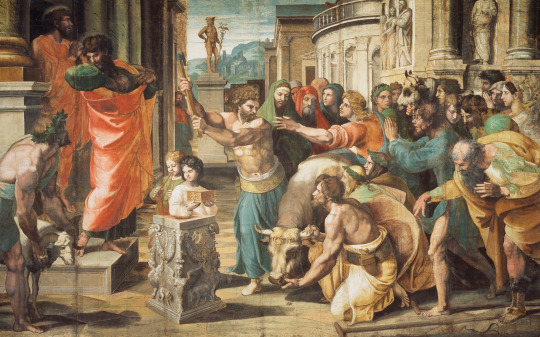
Raphaël (Raffaello Sanzio) (Italian, 1483-1520) The Sacrifice at Lystra for the Sistine Chapel, ca.1515-16 The apostles Paul and Barnabas continue their mission in the city of Lystra (now Hatunsaray in modern Turkey), where the inhabitants mistake them for pagan gods and, following their tradition, prepare to offer them a sacrifice. Paul, wearing his red tunic, and Barnabas, standing behind him, heal a lame man who is then able to walk. Witnessing this miracle, the city's inhabitants mistake Paul for the god Hermes (corresponding to the Roman god Mercury) and Barnabas for Zeus (corresponding to the Roman god Jupiter) and prepare a sacrifice to honour them. Following their beliefs, the people of Lystra start preparing a sacrifice to honour the two apostles. A man with an axe, at the centre, prepares to strike a bull before the altar; on the left St Paul turns away from the sacrifice in disapproval and tears his robe in anger, while Barnabas prays for the crowd to stop (Acts 14:8-18).
#raffaello sanzio#raphael#italian art#italian#christian art#christian#christentum#christianity#art#catholic art#catholicism#european art#fine art#classical art#europe#european#oil painting#fine arts#europa#mediterranean#saint paul#advent calendar
71 notes
·
View notes
Text

Chapel of St. Paul in Damascus, Syria
Syrian vintage postcard
#postcard#ansichtskarte#briefkaart#photography#carte postale#vintage#postkarte#photo#historic#paul#postkaart#ephemera#syria#sepia#chapel#damascus#syrian#tarjeta#postal
8 notes
·
View notes
